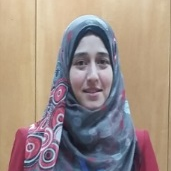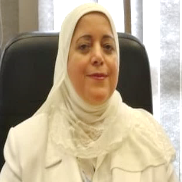International Journal of Computer Network and Information Security (IJCNIS)
IJCNIS Vol. 11, No. 5, 8 May 2019
Cover page and Table of Contents: PDF (size: 687KB)
A Passive Approach for Detecting Image Splicing using Deep Learning and Haar Wavelet Transform
Full Text (PDF, 687KB), PP.28-35
Views: 0 Downloads: 0
Author(s)
Index Terms
Splicing Image Forgery, Tampered Image Detection, Convolution Neural Network (CNN), Haar Wavelet Transform (HWT), Discrete Cosine Transform (DCT), Support Vector Machine (SVM)
Abstract
Passive image forgery detection has attracted many researchers in the recent years. Image manipulation becomes easier than before because of the fast development of digital image editing software. Image splicing is one of the most widespread methods for tampering images. Research on detection of image splicing still carries great challenges. In this paper, an algorithm based on deep learning approach and wavelet transform is proposed to detect the spliced image. In the deep learning approach, Convolution Neural Network (CNN) is employed to automatically extract features from the spliced image. CNN is applied and then Haar Wavelet Transform (HWT) is used. Support Vector Machine (SVM) is used later for classification. Additional experiments are performed. That is, Discrete Cosine Transform (DCT) replaces HWT and then Principle Component Analysis (PCA) is applied. The proposed algorithm is evaluated on a publicly available image splicing datasets (CASIA v1.0 and CASIA v2.0). It achieves high accuracy while using a relatively low dimension feature vector. Our results demonstrate that the proposed algorithm is effective and accomplishes better performance for detecting the spliced image.
Cite This Paper
Eman I. Abd El-Latif, Ahmed Taha, Hala H. Zayed,"A Passive Approach for Detecting Image Splicing using Deep Learning and Haar Wavelet Transform", International Journal of Computer Network and Information Security(IJCNIS), Vol.11, No.5, pp.28-35, 2019. DOI:10.5815/ijcnis.2019.05.04
Reference
[1]Chandan Kumar, Amit Kumar Singh, and Pardeep Kumar,"A recent survey on image watermarking techniques and its application in e-governance," Multimedia Tools and Applications, Springer, Volume 77, Number 3, pp. 3597–3622, September 2017.
[2]A.S.Kapse, Sharayu Belokar, Yogita Gorde, Radha Rane, and Shrutika Yewtkar," Digital Image Security Using Digital Watermarking," International Research Journal of Engineering and Technology, Volume 5, Number 3, pp. 163-166, March 2018.
[3]Tanzeela Qazi, Khizar Hayat, Samee U. Khan, Sajjad A. Madani, Imran A. Khan, Joanna Ko?odziej, Hongxiang Li, Weiyao Lin, Kin Choong Yow, and Cheng-Zhong Xu, "Survey on Blind Image Forgery Detection," In the Journal of IET Image Processing, Volume 7, Number 7, pp. 660-670, October 2013.
[4]Hany Farid, "A Survey of Image Forgery Detection," In the Journal of IEEE Signal Processing, volume 26,Number 2, pp. 16-25, March 2009.
[5]Weibo Liua, Zidong Wanga, Xiaohui Liua, Nianyin Zengb, Yurong Liucd, and Fuad E.Alsaadid," A survey of deep neural network architectures and their applications," Neurocomputing, ELSEVEIR, Volume 234, Number 19 ,Pages 11-26, April 2017.
[6]Yujin Zhang, Chenglin Zhao, Yiming Pi, Shenghong Li, and Shilin Wang," Image‐splicing forgery detection based on local binary patterns of DCT coefficients. Security and Communication Networks," In the Journal of Security and Communication Networks, Volume 8, Number 14, pp. 2386-2395, September 2015.
[7]Ghulam Muhammad, Munner H. Al-Hammadi, Muhammad Hussain, and George Bebis, "Image Forgery Detection using Steerable Pyramid Transform and Local Binary Pattern," In the Journal of Machine Vision and Applications, Volume 25, Number 4, pp. 985-995, May 2014.
[8]Mandeep Kaur, and Savita Gupta, "A Passive Blind Approach for Image Splicing Detection Based on DWT and LBP Histograms," In the Proceedings of International Symposium on Security in Computing and Communication, Chandigarh, India, pp. 318-327, September 2016.
[9]E-Sayed M. El-Alfy, and Muhammad Ali Qureshi, "Combining spatial and DCT based Markov features for enhanced blind detection of image splicing," In International Journal of Pattern Analysis and Applications, Volume 18, Number 3, pp. 713–723, August 2015.
[10]CeLi, QiangMa, LimeiXiao, MingLi, and AihuaZhang," Image splicing detection based on Markov features in QDCT domain," In International Journal of Neurocomputing in ELSEVIER, Volume 228, Number 8, pp. Pages 29-36, March 2017.
[11]Jong Goo Han, Tae Hee Park, Yong Ho Moon, and Il Kyu Eoma," Efficient Markov feature extraction method for image splicing detection using maximization and threshold," In International Journal of Electronic Imaging, Volume 25, Number 2, April 2016.
[12]Ying Zhang, Jonathan Goh, Lei Lei Win, and Vrizlynn LL Thing, "Image Region Forgery Detection: A Deep Learning Approach," In the Proceedings of the Singapore Cyber-Security Conference (SG-CRC), pp. 1-11, January 2016.
[13]Belhassen Bayar, and Matthew C. Stamm, "A Deep Learning Approach to Universal Image Manipulation Detection using a New Convolutional Layer," In the proceedings of the 4th ACM Workshop on Information Hiding and Multimedia Security, Vigo, Galicia, Spain, pp. 5-10, June 2016.
[14]Eman I. Abd El-Latif, Ahmed Taha, and Hala H. Zayed," A Deep Learning Approach for Detecting Splicing Forgeries in Images," International Journal of Computer Science and Information Security, Vol. 16 No. 10, 2018.
[15]Honglak Lee, Chaitanya Ekanadham, and Andrew Y. Ng. "Sparse deep belief net model for visual area V2," In the proceedings of neural information processing systems, Vancouver, British Columbia, Canada, pp. 873-880, December 2008
[16]Hugo Larochelle, Yoshua Bengio, Jér?me Louradour, and Pascal Lamblin, "Exploring strategies for training deep neural networks," In the Journal of Machine Learning Research, volume 10, pp. 1-40, January 2009.
[17]Aker Cemal, and Sinan Kalkan, "Using Deep Networks for Drone Detection," Advanced Video and Signal Based Surveillance (AVSS),In the proceeding of 14th IEEE International Conference on Advanced Video and Signal based Surveillance, Lecce, Italy, pp. 1-6, August 2017.
[18]Alex Krizhevsky, Ilya Sutskever, and and Geoffrey E. Hinton, "ImageNet Classification with Deep Convolutional Neural Networks," In the proceedings of Advances in neural information, USA, pp. 1097-1105, December 2012.
[19]Nick Kingsbury and Julian Magarey," Wavelet Transforms in Image Processing," In the proceedings of Signal analysis and prediction, Birkh?user, Boston, pp. 27-46,March 1998.
[20]Lifei Zhan, Yuesheng Zhu, and Zhiwei Mo, "An Image Splicing Detection Method Based on PCA Minimum Eigenvalues," In the Journal of Information Hiding and Multimedia Signal Processing, Volume 7, Number 3, May 2016.
[21]CASIA Tampered Image Detection Evaluation Database (CASIA TIDE v1.0)” Available at: http://forensics.idealtest.org:8080/index_v1.html.
[22]CASIA Tampered Image Detection Evaluation Database (CASIA TIDE v2.0)" Available at: http://forensics.idealtest.org:8080/index_v2.html.
[23]Sahar Q Saleh, Muhammad Hussain, Ghulam Muhammad, and George Bebis," Evaluation of Image Forgery Detection using Multi-scale Weber Local Descriptors," In the Journal of International Symposium on Visual Computing, Volume 24, Number 4, pp. 416-424, August 2015.
[24]Saba Mushtaq, and Ajaz Hussain Mir," Novel method for image splicing detection," In the proceedings of Advances in Computing, Communications and Informatics (ICACCI), New Delhi, India, pp. 24-27, September 2014.
[25]Zhongwei He, Wei Lu , Wei Sun , and Jiwu Huang, "Digital image splicing detection based on Markov features in DCT and DWT domain," In the Journal of Pattern Recognition, Volume 45, Nunber 12, pp. 4292–4299, December 2012.
[26]Matthias Kirchner and Jessica Fridrich, "On detection of median filtering in digital images," In the proceedings of SPIE, Media Forensics Secure. II, volume 7541, pp. 754110-1–754110-12, January 2010.
[27]Xudong Zhao, Shilin Wang, Shenghong Li, and Jianhua Li, "Passive Image-Splicing Detection by a 2-D Noncausal Markov Mode," In the Journal of lIEEE Transactions On Circuits And Systems For Video Technology, Volume. 25, Number 2, February 2015.


